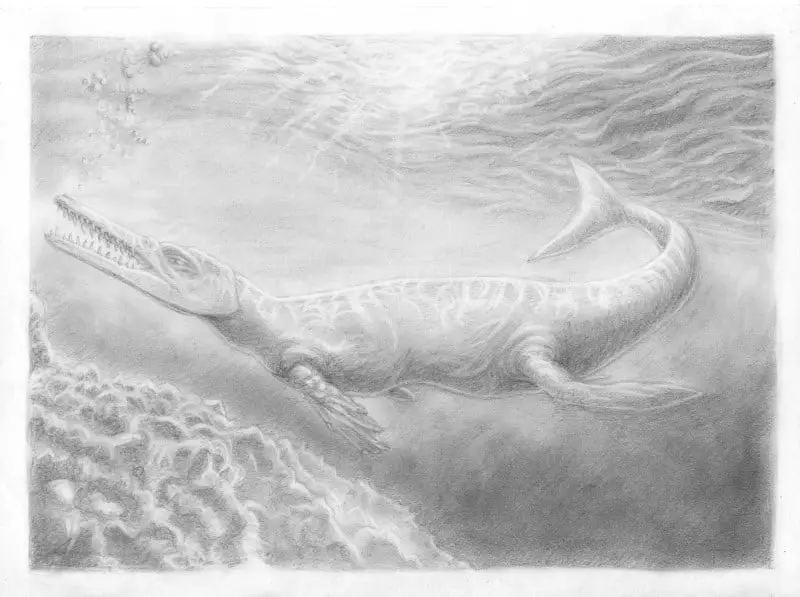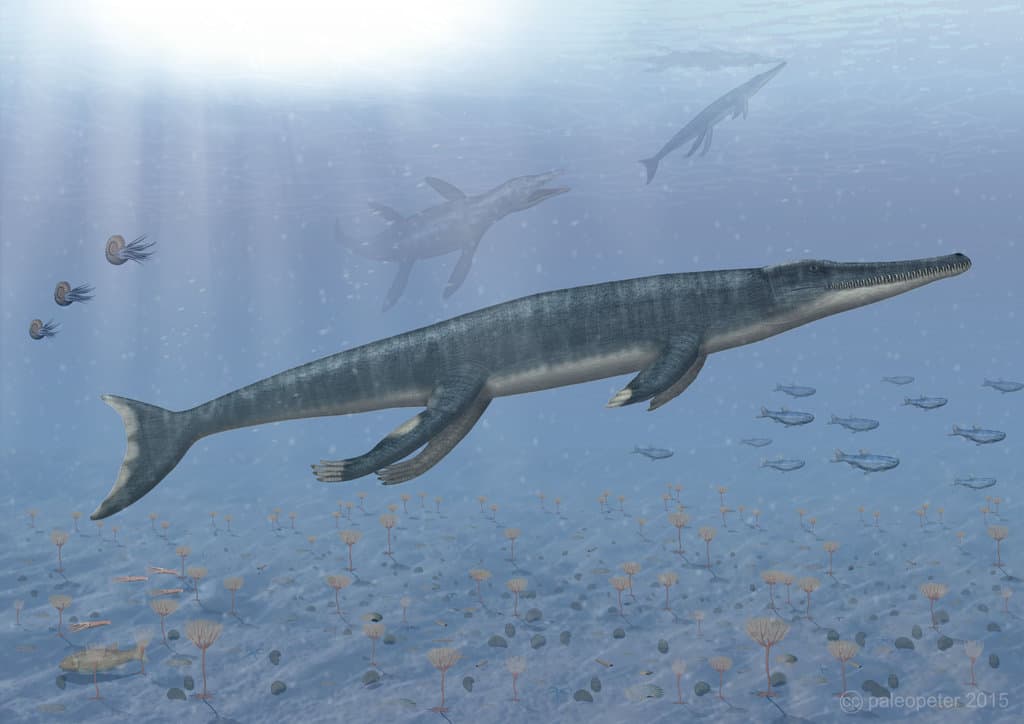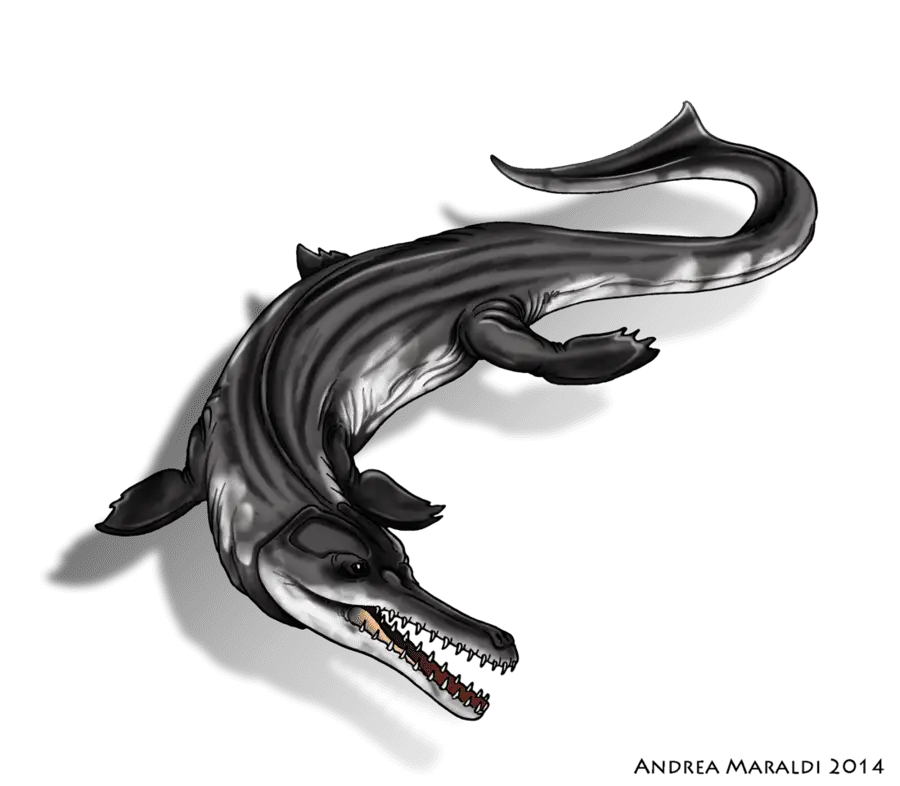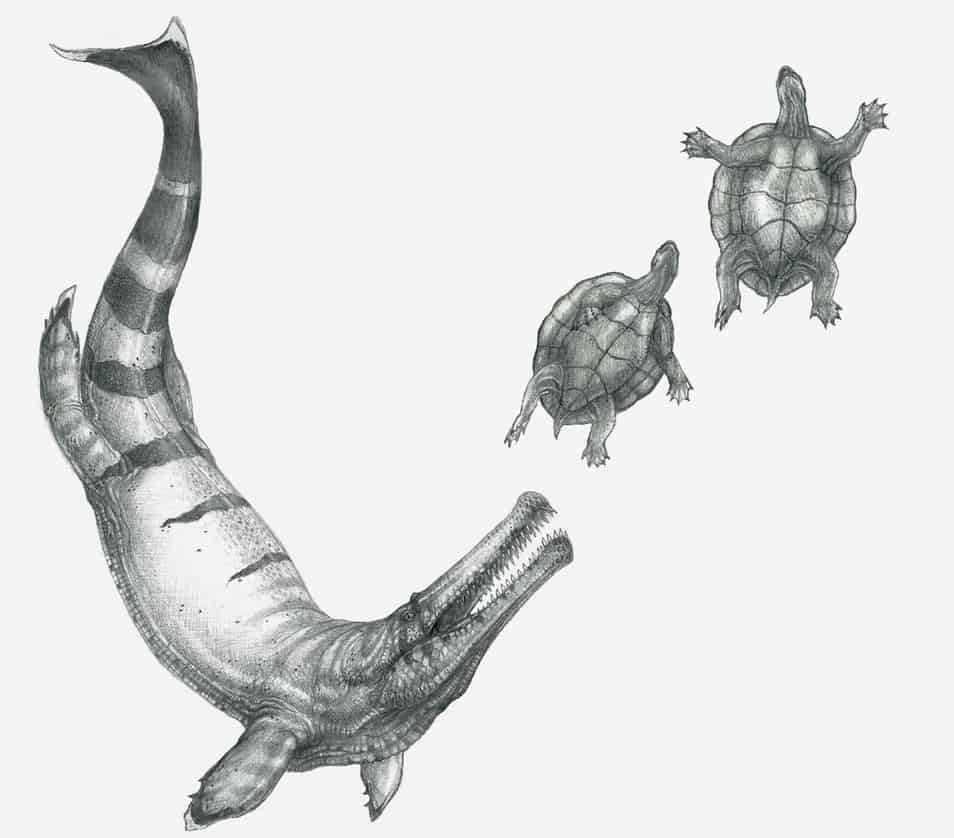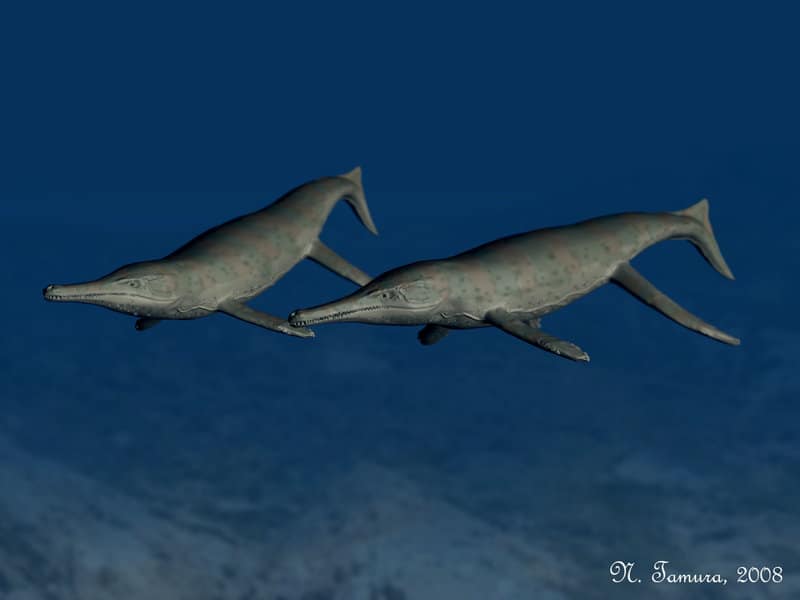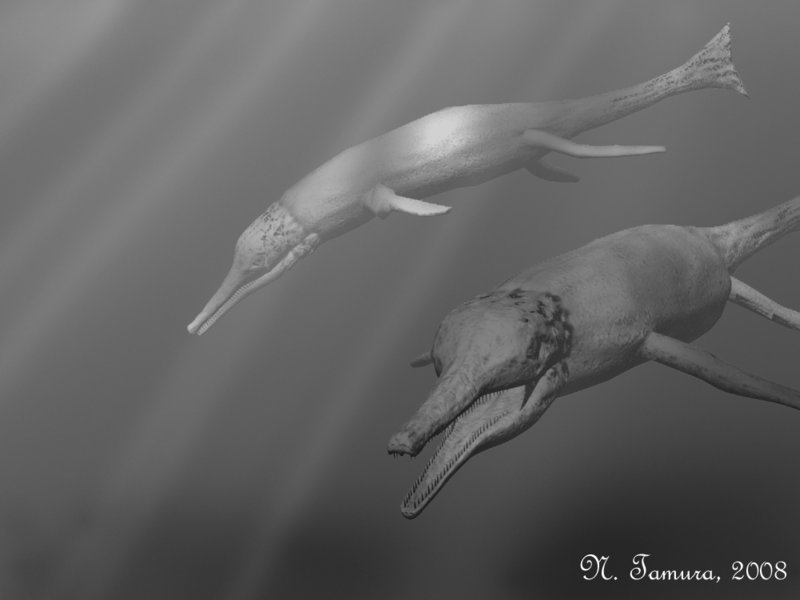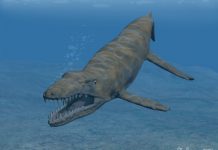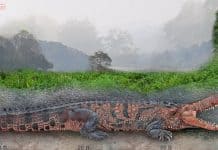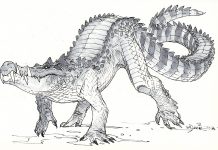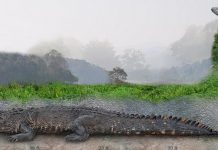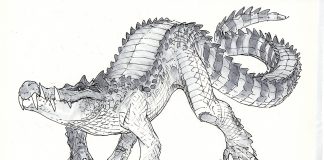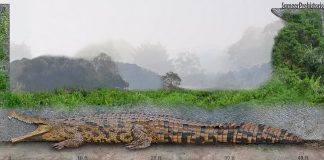Quick Metriorhynchus Facts
- Lived during the Late Jurassic Period
- Lived in Eurasia
- Name means “moderate snout”
- Lived primarily in the oceans
- Was a Carnivore
About Metriorhynchus
Metriorhynchus was a prehistoric crocodile which lived approximately 155 million to 145 million years ago during the Late Jurassic Period. Fossils of this crocodile were first discovered during the 19th century in England, France and Germany. In 1830, it was named by German paleontologist Christian Erich Hermann von Meyer. Its name means “moderate snout” in Greek.
One of the most interesting facts about Metriorhynchus is that it can be found in about 12 different species. That made it one of the most abundant marine animals that lived during this period of time in what is now Western Europe. This crocodile was about 10 feet long, weighed around 500 pounds and had skin that was very different than what you would think of when thinking about crocodiles or alligators. Its skin was smooth and was more like that of a Californosaurus, Temnodontosaurus or Excalibosaurus. In other words, kind of like the skin that a modern dolphin has today, as many Metriorhynchus pictures accurately depict.
Metriorhynchus was an animal that seemed better suited to the ocean than it did the land. Instead of legs, it had flippers which would have stabilized it and allowed it to move the way it wanted, and it also had a back flipper which propelled it through the water. This animal also had a salt gland that allowed it to remove salt from seawater so it could drink it. Just another clue that this crocodile likely spent the majority of its time in the ocean and very little – if any – on land.
However, some paleontologists have speculated that it may have returned to land to lay eggs. If it did, then it probably didn’t stray far from the shoreline. It may have also hunted in the waters around the shoreline, feeding off of animals that swam in the water at the time such as Liopleurodon. It may have also lived off of squids, shellfish and other forms of fish.

